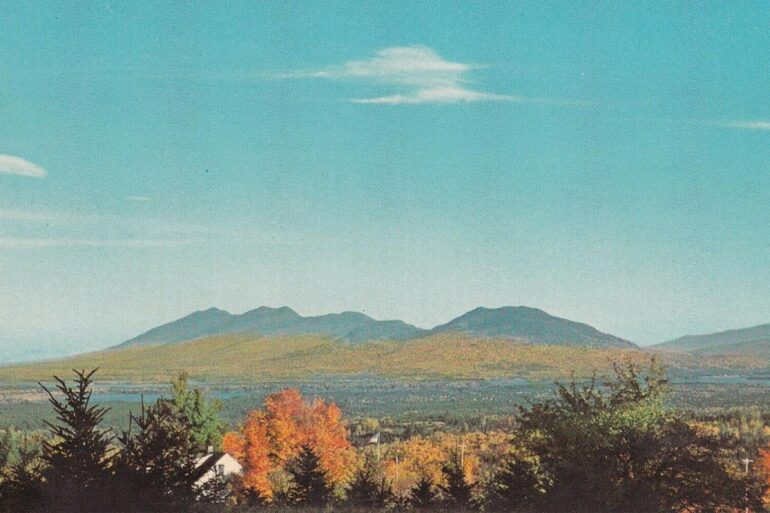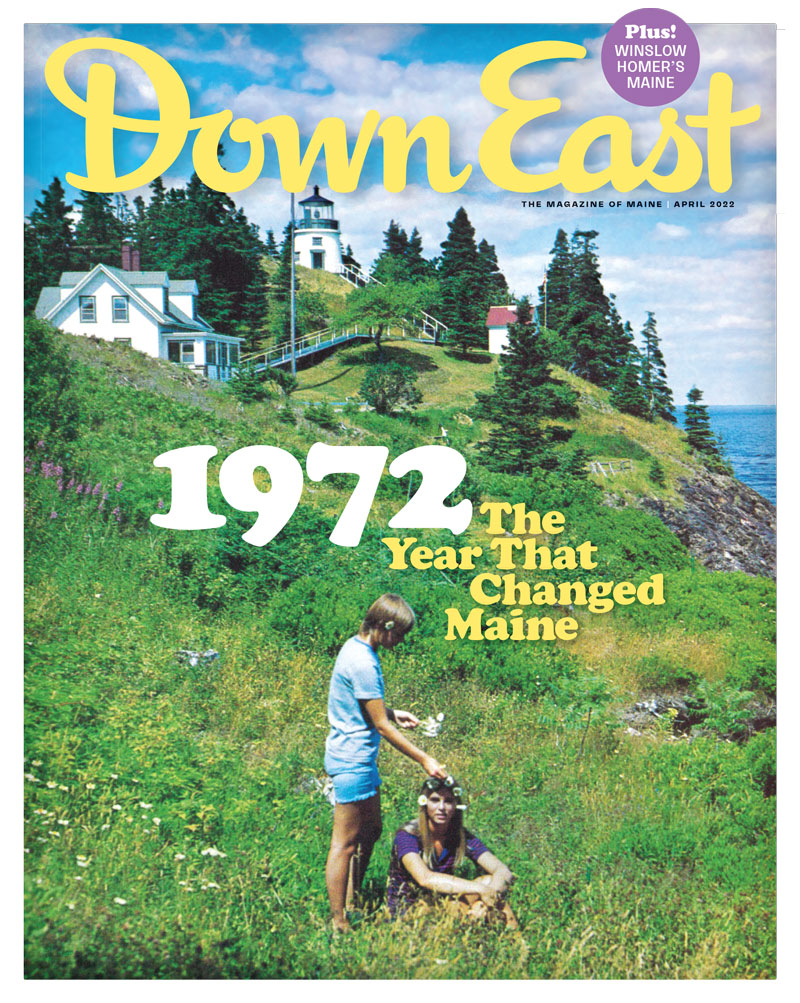By Mary Pols
From our April 2022 issue
It all began with environmental reporter Bob Cummings wanting an editor off his back. The Sunday paper had space to fill — what was he working on? Cummings was no greenhorn. After four years at Portland’s Gannett newspapers (which included the Press Herald, the Evening Express, and the Maine Sunday Telegram) and nearly a decade at the Bath Times, he knew that if he didn’t float an idea, he’d soon be researching some flimsy thing his editor noticed driving to work.
“Let’s do a story about the public lots,” he proposed.
“Never heard of them,” his editor said.
At the time, few Mainers had. Cummings had learned about the state’s public lots years before, from a Bath resident named White Nichols, a one-time surveyor and frequent pesterer of journalists, who’d urged Cummings to investigate how some 400,000 acres of overlooked, publicly owned land was being ceded to timber companies. Because it wasn’t a Bath story, Cummings filed the lead away. Now, he was ready to follow it.
His first story on the subject ran on the front page of the March 12 Telegram, under the headline “Public Land Sold and Given Away.” In the piece, Cummings explained how 19th-century Mainers, upon separating from Massachusetts in 1820, expected the whole of their state would one day be settled. In preparation, the state surveyed townships of about 36 square miles, and within each one, set aside wooded parcels of 1,000 to 1,280 acres, to be held in trust by the state. As towns sprung up, the thinking went, they could use the reserved lots and proceeds from them to support churches and schools (which the law later limited only to schools).
But settlers never flocked to the north woods, and in 1850, the state started aggressively selling land in the proposed townships — those places in your Gazetteer with names like T14 R9 WELS — to timber companies and others at bargain rates. The public lots, by law, couldn’t be sold, so the state sold rights to cut timber on them — and then, as the loggers moved in, more or less forgot they existed.
By 1972, timber companies owned the overwhelming majority of Maine’s undeveloped lands, but some 400,000 acres of public lots remained scattered across the state’s unincorporated townships. Some were on mountain summits, others on lakefront. About a quarter had never actually been designated on maps and existed only as an idea, an ownership stake the public had in the townships. The very few in state government who were aware of the lots’ existence had come to think of them as essentially belonging to timber companies, with the state retaining little more than mineral rights.
But Cummings dug up the legal documents establishing the public lots and the deeds conferring the timber leases, and what he saw convinced him the state had never parted with surface rights: the lands belonged to Mainers. His first story quoted nature photographer and Natural Resources Council of Maine officer John McKee, who cited the squandered recreational potential of the forgotten parcels at a time when the state was struggling to preserve land from development. Cummings also reported a few provocative tidbits, including that the Dead River Company had leased state-owned land for camps and that the legislature had authorized the sale of public land in the Carrabassett Valley for as little as $400 an acre.

The article prompted what the paper called a “deluge of letters.” A week later, the Telegram ran a tart editorial. “We do not imply deliberate wrongdoing by State officials,” it read. “But we do strongly suggest that State officials are asleep at the switch.”
Throughout 1972, Cummings kept asking questions — for example, did the timber companies even have rights to harvest in perpetuity? — that infuriated timber execs and forestry officials and stoked public outrage. Governor Kenneth Curtis established a committee to look into the state’s stewardship. The state attorney general assigned a legal analysis of the deeds, and when the office dragged its feet on releasing it, Curtis gave Cummings a summary. In November, Cummings broke the news that the report suggested timber companies’ rights were moot after they’d cut the trees standing at the time of the deeds — they’d essentially been squatters for most of the 20th century.
In 1973, Cummings’s reporting led to the establishment of the Bureau of Public Lands (now the Bureau of Parks and Lands). The state and the timber companies went to court for years, with the Maine Supreme Judicial Court finally ruling in 1981 that the timber leases were indeed long since exhausted. Through settlements and land swaps with the industry, the state parlayed the diffuse public lots into what’s now known as the state’s system of public reserved lands, which includes the remarkable 36,000-acre Bigelow Preserve, the Mahoosuc Mountains, 22,000 acres of Aroostook County’s Debouille hills and ponds, the Cutler Coast Public Land down east, and too many other gems to list. Through it all, Cummings kept filing stories and holding public officials’ feet to the fire.
“What he achieved was quite extraordinary — he just wouldn’t listen to ‘no,’” says Thomas Urquhart, whose 2021 book Up for Grabs: Timber Pirates, Lumber Barons, and the Battles over Maine’s Public Lands traces the saga of the public lots in comprehensive detail. Urquhart, who interviewed Cummings in 2006, explains how the reporter was shaped by an upbringing in Bath during an era when sewer pipes discharged directly into the Kennebec — and how Cummings’s Bath Times reporting was instrumental in ending the practice. At a time when Mainers were rapidly losing access to their natural heritage, he was emphatic that the public lots should be the public’s to enjoy.
“What he believed in very much was the power of the lands around us,” says his daughter Brenda Cummings, now Bath’s city assessor. “They didn’t have to be extraordinary lands, they just had to be what’s there. You fall in love with your backyard, and then maybe you travel to Baxter, and that’s what makes you passionate about protecting all these other things that you don’t know.”
After Cummings died, in January 2016, Brenda and her sister, Charli, made a vow: they would scatter some of their father’s ashes in public lots around the state, returning him to the land he fought for.


